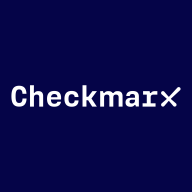

Checkmarx Software Composition Analysis and Apiiro compete in the software security category. Checkmarx has an advantage in user satisfaction due to its favorable pricing and support, while Apiiro leads with its extensive features considered worth the investment.
Features: Checkmarx offers efficient vulnerability detection, seamless integration capabilities, and cost-effective solutions for software security. Apiiro provides advanced security throughout the software development lifecycle, excelling in threat modeling, risk management, and a wider scope of identifying and managing security risks.
Ease of Deployment and Customer Service: Checkmarx is known for its simple deployment and responsive support teams, facilitating easier integration and operationalization for businesses. While Apiiro offers robust support, its deployment process is more complex due to its comprehensive feature set. Businesses prioritizing ease of use may lean towards Checkmarx, whereas those focused on advanced functionalities might select Apiiro.
Pricing and ROI: Checkmarx provides competitive pricing and satisfactory ROI, appealing to organizations conscious of budget. Apiiro involves a higher setup cost but is often deemed a justified investment due to its extensive feature set and significant security improvements. The initial expenditure with Apiiro is higher, yet its long-term value is evident through substantial security enhancements.
| Product | Market Share (%) |
|---|---|
| Checkmarx Software Composition Analysis | 2.6% |
| Apiiro | 1.9% |
| Other | 95.5% |


| Company Size | Count |
|---|---|
| Small Business | 7 |
| Large Enterprise | 8 |
Apiiro is the leader in application security posture management (ASPM), unifying risk visibility, prioritization, and remediation with deep code analysis and runtime context.
Companies like Morgan Stanley, SoFi, Rakuten, and Navan leverage Apiiro's ASPM to...
Get complete application and risk visibility: Apiiro takes a deep, code-based approach to ASPM. Its Cloud Application Security Platform analyzes source code and pulls in runtime context to build a continuous, graph-based inventory of application and software supply chain components.
Prioritize risks with code-to-runtime context: With its proprietary Risk Graph™️, Apiiro contextualizes security alerts from third-party tools and native security solutions based on the likelihood and impact of risk to uniquely minimize alert backlogs and triage time by 95%.
Fix and prevent risks that matter—faster: By tying risks to code owners, providing LLM-enriched remediation guidance, and embedding risk-based guardrails directly into developer tools and workflows, Apiiro improves remediation times (MTTR) by up to 85%.
Apiiro's native security solutions include API security testing in code, secrets detection and validation, software bill of materials (SBOM) generation, sensitive data exposure prevention, software composition analysis (SCA), and CI/CD and SCM security.
Checkmarx Software Composition Analysis (SCA) helps organizations manage the risks associated with open source and third-party components in their software applications. While leveraging open source libraries and third-party dependencies is common practice, it can also introduce security vulnerabilities and license risks.
Checkmarx SCA offers a multifaceted approach to managing these risks by:
Automatically scanning project repositories, build configurations, and manifests to create a comprehensive inventory of all components, including version information and associated licenses.
Performing vulnerability assessments on each component, including identifying and prioritizing actual exploitable or reachable vulnerabilities.
Protecting organizations from software supply chain attacks involving malicious packages, such as the XZ Utils backdoor.
Identifying licenses associated and providing insights into license obligations, restrictions, and potential conflicts.
Integrating seamlessly into existing development workflows and CI/CD pipelines.
Providing actionable remediation guidance to help organizations address identified vulnerabilities and compliance issues effectively.
We monitor all Software Composition Analysis (SCA) reviews to prevent fraudulent reviews and keep review quality high. We do not post reviews by company employees or direct competitors. We validate each review for authenticity via cross-reference with LinkedIn, and personal follow-up with the reviewer when necessary.